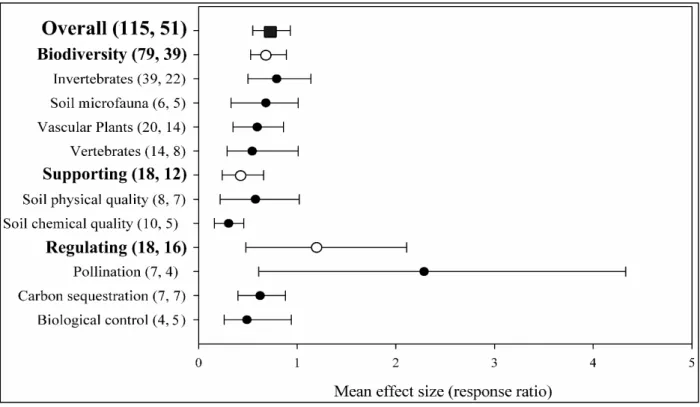Quantifying the impacts of ecological restoration on biodiversity and ecosystem services in agroecosystems: A global meta analysis
Texto completo
Figure




Documento similar
Indeed, the variations in all traits related to burrow construction and soil and dung manipulation play a key role in the most important effects of dung beetles on
Therefore, it is observed that color flyers, printed both sides, were much more usual in the group of Company and Asian (100%), that in the group of Independent or Group,
While, in Barcelona (Spain), the assessment of regulating and cultural services supplied by the Collserola peri-urban Natural Park, demonstrates how a compact city
To address these objectives, we analyzed (see Fig. 1) the biophysical factors underpinning ecosystem services in terms of blue and green freshwater flows and variables
The selection included two supporting ecosystem properties (soil conditions, composed of soil formation and soil stability, and habitat quality), four regulating services
To reach these objectives, the thesis builds on four case studies that cover a critical assessment of (i) the extension of the Human-scale Development model to non-humans in
The biosphere reserve model explicitly recognizes the necessity of integrating different actors into the design and implementation of effective mechanisms of biodiversity
Six scenario archetypes for the region are described in terms of their driver assumptions and impacts on nature (including biodiversity) and its contributions to people



